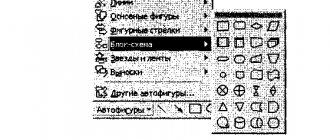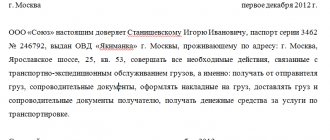Many people are concerned about how to write a letter of appeal. The pattern is, in fact, almost the same in all cases. Many people send this document to organizations, firms, authorities and other places to resolve certain issues. It must be compiled both by ordinary citizens and various private entrepreneurs. Well, let's put everything in order.
First thing you need to know
So, before writing a letter of appeal, you need to understand on what principle this document is drawn up. Well, when writing such a paper, you must follow absolutely all the rules of business correspondence. The first thing you need to learn is to use a formal writing style. It is important to think about the content in advance, compose it convincingly, clearly, logically and understandably. An example of a letter of appeal is a text, the essence of which is stated briefly and optimally. The maximum document length is one page. The main task of a person is to attract the attention of the recipient and interest him in his problem. It is necessary that the recipient immediately makes a decision after reading the message. The letter of appeal should be very significant. The sample is a text in which the author’s position is clearly stated and supported by more than one fact and evidence. It is necessary to consistently present your questions and requests. There is no point in mixing everything together. And, of course, at the end it should be emphasized how important this message is.
How to form an official letter
No standards or templates have been developed for an official letter, so you can write it in free form or according to a sample developed at the enterprise. The main condition is that this document in its structure corresponds to the norms of office work, and in its text - to the rules of the Russian language.
It should be remembered that there is a number of information that must be contained in the information letter:
- name of the sending organization;
- organization address;
- contact phone number (for communication);
- position and full name of its representative;
- the essence of the message;
- sender's signature.
Any additional papers, photos and video documents may be attached to the letter. In this case, their presence should be noted in the main text. It is also permissible to indicate in the “body” of the letter links to laws, regulations, and legal acts that are directly related to the message.
Structure
This aspect is also of great importance. Composition is important when writing a letter of appeal. The sample is standard. In the upper left corner, put the date of application. On the right - indicate where and to whom the letter should be addressed. This may be the name of a company, institution, government agency, full name of an individual, etc. Just below, write your details: full name, address, telephone, e-mail - the more information, the better. It is advisable to type the text on a computer, and if you decide to write by hand, then be sure to use legible handwriting.
Structure of a business letter
A clear structure is an essential characteristic of a business letter. It will help the recipient quickly understand the meaning of what is written and reduce the time it takes to read it. A business letter consists of the following main parts:
1. Heading (subject of the letter).
The title of the letter should contain its brief purpose or essence. You cannot use any abstract phrases here. It should be clear to the recipient what the letter is about based on the title alone. For example, “About changes in prices for the supply of products” or “Business proposal for trade cooperation with company XXX.”
2. Greeting.
The greeting “Dear + First Name and Patronymic!” is considered traditional in business letters. However, it is not necessary to use the name. You can also address the addressee through his position: “Dear Mr. Director!” However, keep in mind that calling by name somewhat reduces the psychological distance and emphasizes the well-established business relationship. If the letter is addressed to a group of people, then it is acceptable to write “Dear ladies and gentlemen!”, “Dear partners!” and so on. Using the abbreviations Mr., Ms., or initials is perceived as disrespectful, so try to avoid it.
3. Statement of the purpose of writing the letter, its essence, and main idea.
This is the main part of the letter. Here you write directly about the very reason for writing the letter.
4. Your proposals for solving this problem, recommendations, requests, complaints.
Business letters almost always require a certain reaction from the addressee (except for purely informational letters). Therefore, it is important to describe not only the problem itself, but also offer your own options for solving it. If you write a complaint, then ask to take appropriate measures; if you make an offer of cooperation, then describe its possible options. In short, the recipient of your letter must not only understand “what” you want from him, but also understand “how” you propose to implement it. Then it will be a real business letter.
5. Brief summary and conclusions.
At the very end we can summarize all of the above. However, it is not always possible to do this very briefly. In this case, it’s not worth writing in several sentences what you already described in the first two paragraphs. Remember that a business letter's best friend is brevity. Therefore, in most cases it is enough to limit yourself to the phrases “I hope for successful cooperation”, “I am waiting for your answer on this issue” and so on.
6. Signature.
A business letter is signed with the position, first and last name of the sender with the traditional phrase “With respect.” Other options are also possible: “Best wishes”, “Sincerely yours” and so on, depending on the closeness of your contact with the recipient. The phrase “With respect” is the most universal, so if you are in doubt about how it would be more appropriate to subscribe, then use this phrase and you definitely won’t miss.
It would also be a good idea to add options for contacting you in your signature: other email addresses, work phone numbers, Skype. The benefit of this is not only that the recipient, if desired, will be able to quickly contact you in a way convenient for him, but also that this way you will demonstrate your openness and readiness to communicate with the recipient.
And don’t forget that an official letter is first and foremost a document. Therefore, by neglecting the rules for drawing it up, you irrevocably ruin the reputation of your company and yourself as a specialist.
Letter of appeal: sample content
In the middle of the sheet you need to write the text directly. Which appeal should I choose? Definitely official, choose one of the following: respected, master, revered, comrade, etc. The word must be accompanied by a surname with a given name and patronymic. If a person occupies a position or has a title, then this must also be indicated. To emphasize the significance of the request, you should put an exclamation point at the end. And then write the letter of appeal itself. The pattern, as such, exists, but it is different for each case. Well, in general there is a universal option. First of all, the reasons that motivate the appeal are indicated, then the essence of the problem, and then the purpose of the letter is indicated. There should be as many details as possible. They will help convince the recipient that the request will be fulfilled. And besides, it is important to indicate the basis for the appeal. This may be a norm, law, set of rules, regulation or legislative act.
Letter form and design
Be sure to use your company letterhead. This always makes an impression and increases the loyalty of the “interlocutors”. The type of forms, standards for filling them out and design elements must be specified in the order for the organization (or instructions for office work). Basic requirements for business letter forms can be found in GOST 2003 “Requirements for the preparation of documents.”
It is advisable to “squeeze” basic information about the company into the form:
- name (and abbreviated name);
- actual and postal addresses;
- E-mail address;
- Contact phone numbers;
- Website address.
This is not a list of required data, but only a sample list. If desired, you can add or exclude something.
The general requirements for writing a letter are as follows:
- minimum indentation – 10 mm on the right and 20 mm on the left, top and bottom;
- if the letter is written on two or more sheets, each of them must be numbered in the middle at the top;
- Each application is numbered separately;
- in the upper left corner the outgoing number of the letter is indicated (do not forget to record it in the document registration log);
- in the upper right corner the name of the organization, the position of the addressee and his surname with initials are indicated;
- in the lower left corner - your position, surname with initials and signature;
- Be sure to put the date the letter was written at the bottom.
However, GOST 2003 allows the use of forms not only with angular, but also with longitudinal arrangement of details (when they are indicated in the center). The corner arrangement looks more familiar and is easier to read, so it is better to choose this option.
Formulation
Many people find it difficult to formulate their wishes or requests. Well, there are a few rules here. First, demands should be avoided. It's better to use more persuasion. The addressee must understand that it is beneficial for him to fulfill the request. You can hint to him about his interest in this matter. The appeal should end on an optimistic note, encouraging action, but as correctly as possible. It’s better to show that the answer means a lot and you can’t wait to get it as soon as possible. And, of course, everything must be signed. After this you can send. All that remains is to wait for an answer.
How to write a letter
So, you get the task of what to do:
- We carefully read the letter, look at the friend’s name and write it at the beginning of the letter. You will laugh, but some people have learned the template and write Dear Yoda everywhere, no matter who the letter is actually from – Leia or Han Solo.
- We study the questions and think about how we will answer them. Please note that there are tricky questions that look like one, but in fact there are two of them! For example, Do you like watching films, why? It is necessary to write not only yes or no, but also justify the point of view. Or Where and when do you usually go shopping? Where and when are two question words, and there should also be two answers to them. Therefore, monosyllabic answers to such questions lead to loss of points.
- We look at the topic on which we need to ask questions. Attention! It is not written at the end of the letter, but in the task below the text of the letter! This is where the students make the most mistakes - they look at how the letter ends, and then ask where the friend left off. But the task is different! And they will give them -1 point for failing to complete the communication task. Here is an example of such a trap letter: ... In our city we have an annual competition for teenagers who make their own short films. This year I got the second prize for a film about my grandparents. Do you think it's important to record family history? Who do you think should do it? How can it be done best? This month is my mom's birthday and now I am thinking about a gift for her. I want it to be very special...Write a letter to Tom.In your letter- − answer his questions- − ask 3 questions about his mom Do you see the end of the letter? About mom's birthday and a gift for it. And you need to ask questions about mom! Therefore, questions in the style of Where are you going to celebrate your mom's birthday? What are you planning to present her? Will she invite a lot of people to her party? will be off topic. The topic here will be to ask How old is your mom? Where does she work? What does she look like?
- Write a letter, dividing it correctly into paragraphs and indenting the red line (or you can skip the line between paragraphs, it doesn’t matter) and check yourself for mistakes . The most common mistakes students make when writing letters are: – articles (they forget about them altogether, or use the wrong ones) – tenses (the time marker points to the present perfect, but they write the past simple) – spelling (beautifull instead of beautiful or letters in words are out of place) they let you in for being in a hurry) Anyway, I always arm those taking the exam with the golden rule: If you don’t know or have doubts, don’t write! Replace it with a synonym or even remove the unfamiliar word from the text.
- Count how many words you got. Need – 100-140. I advise you not to count on an error of 90 - 154, you never know, you will be shortchanged due to the haste, and the point will be taken off, it will be a shame.
- When you copy your answer into the exam form, do not forget to write the task number at the beginning - Task 39. Organize your time so that during the exam you have time to copy the entire written task into the form. An essay written as a draft is not checked.








